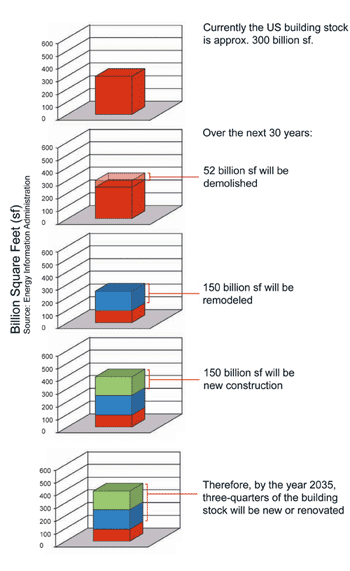When I hear folks like Alex Steffen talk about “remaking cities,” my gut reaction is that U.S. cities seem mostly permanent, like they’re already built and we’re stuck with them. (Quick reminder: The world’s cities cause 75 percent of all carbon dioxide emissions, according to several measures.) But then there’s this new slideshow at Slate, in which Camilo Jose Vergara photographs the ruins of urban America. Some of the photos portray the same abandoned landscapes just a few years apart. It’s amazing how quickly built structures decay, and how quickly weeds and rot take root. It’s a reminder that cities—especially the struggling ones—offer constant opportunities for smarter rebuilding and redesigning.
For a more empirical perspective, Architecture 2030 offers a useful rundown:
 Courtesy Architecture 2030
Courtesy Architecture 2030
Herein lies the hope. By the year 2035, approximately three-quarters (75%) of the built environment will be either new or renovated.
Architecture 2030 founder Ed Mazria notes that these are pre-recession figures. Construction rates are significantly lower at the moment, though renovation rates are probably up. Even with that caveat, our built environments are less permanent than you might assume.


